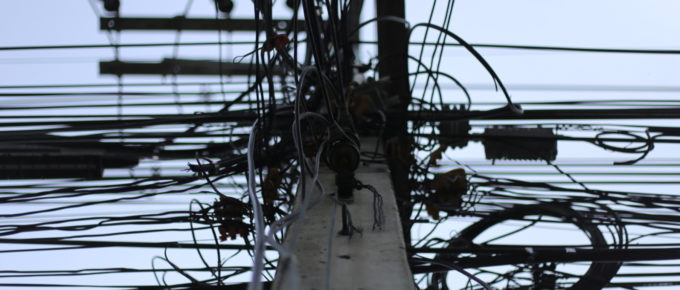The work that I specialize in is figuring out viable solutions to complex, messy and challenging projects. It is intense and it is consuming. There are also numerous pitfalls to doing it well. You try to create clarity around something that is inherently unclear. You also need to avoid making it too simple, where simple answers become tempting and potentially create further challenges. Doing this work is as much art as it is science.
Cracks Around the Liminal Edges of Re-entry
We crossed the threshold of two years with the pandemic just a few days ago. We all entered into this liminal experience together, unequal though that still was. Two years on, we are not all leaving it together. There are more than cracks around the edges, and our personal experiences are fragments of a shattered whole. For those still trying to navigate through to the other side, there are insights that liminality has to offer, and perspectives to manage wrestling with the complex question of, “What’s next?”
Wrestling With Complexity
Most of us are not fans of complexity. We may like to tackle difficult challenges as part of our work. But the closer that complexity comes to home, the less comfortable and confident that we feel. The natural reaction to that is to exert control. We try to impose structure and manage work and force our way through to the finish line. Research and experience have shown—time and time again—that this is more often than not a recipe for failure. That is not to say that there aren’t strategies to navigate complexity. They are just different than our normal impulses suggest.
Valuing Simple Models Over Grand Theories
I’ve ranted about best practices many times before. Nonetheless, it is human nature to want there to be a right answer, to know that we are doing the right thing and to believe that the actions we take are defensible. Normal to want, impossible to get. The reality is that we live in a complex and nuanced world, and we need varied ways of making sense of it. We need effective ways to evaluate our options, understand the implications and assess whether we are making the best decision at the time. That’s where models come in.
Remembering What You Know
We have different ways of knowing, and we have different patterns of forgetting. Facts and details that we don’t use regularly fade, distort or disappear altogether. Concepts, patterns and generalized principles remain as an underlying skeletal structure. Where we value factual knowing over conceptual reasoning, though, we can call into question what we know and what we don’t. That is particularly challenging when we start making sense of emerging trends and new technologies that seem impenetrable, obscure and yet unnervingly popular and hyped. It can feel like you are missing something fundamental. The reality is that it is the fundamentals that are often missing instead.
We Are All Liminal Still
It’s been a year now since we all went over the cliff together and entered the space of the pandemic. We have arguably been held in liminal space ever since, individually and collectively. That’s an entirely unusual, difficult, complicated and unprecedented place to be. Liminality usually defines the transitional space for individuals or small groups. It is rare that an entire society is plunged into the void, without clarity, guidance or a clear way out. A year on, we’re still in a liminal space. Here’s what that means, and what it could mean for what comes next.






